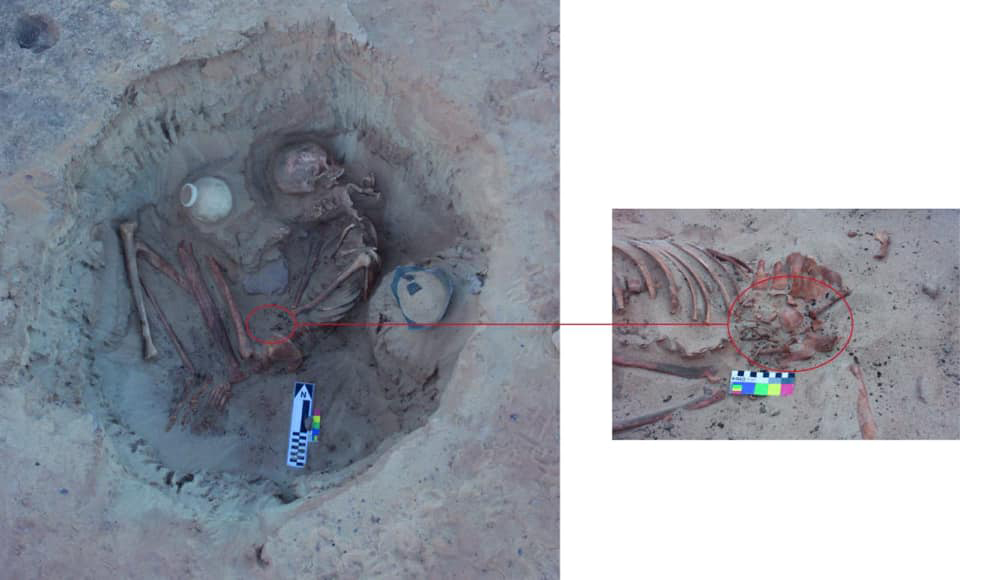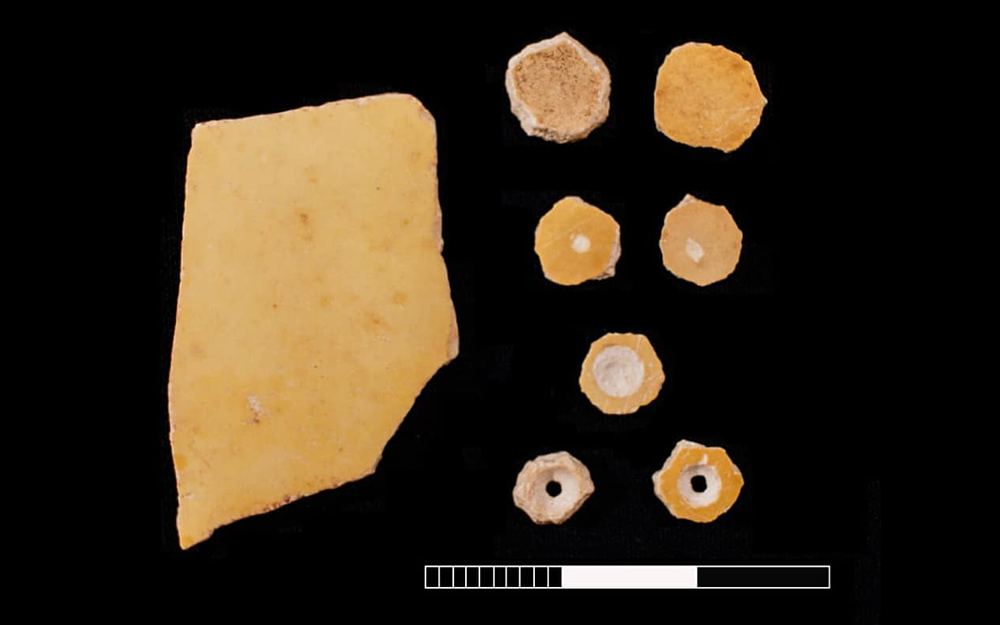Ancient Skeletons of Woman and Fetus Hint at Childbirth Death 3,700 Years Ago

Archaeologists in Egypt recently unearthed a grim discovery: the skeleton of a young woman dating to about 3,700 years ago who was in the final weeks of her pregnancy when she died.
And she was buried with the unborn fetus still inside her body.
The tiny skeleton was head-down within the woman's pelvis — a position typically seen in the third trimester — suggesting that she may have died following the onset of labor, officials with Egypt's Ministry of Antiquities said in a statement on Nov 14. [The 8 Most Grisly Archaeological Studies]
An international team of experts from Yale University and the University of Bologna in Italy found the remains. They uncovered the skeletons in a cemetery at the dig site Kom Ombo in Aswan, a city in southern Egypt located about 530 miles (852 kilometers) from Cairo. The graveyard was used between 1750 B.C. and 1550 B.C. by nomadic people who traveled north into the region from Nubia, Secretary General of Egypt's Supreme Council of Antiquities Mostafa Waziri said in the statement.
Other recent discoveries at Kom Ombo include a statue of a cobra-crowned sphinx, engravings of a warrior pharaoh and a stone head representing the Roman emperor Marcus Aurelius.
In the recently excavated gravesite, the woman's body was curled inward and wrapped in a leather shroud. Scientists estimated that she was around 25 years old when she died. Archaeologists inspected her pelvic bones and discovered abnormalities that may have stemmed from an old fracture that was improperly set or that had healed incorrectly. This may have contributed to the woman's difficulties during childbirth, ultimately leading to her death and that of her fetus, Waziri said.

Objects found in the grave included a pottery jar, a container that was colored red on the outside and black on the inside in the style of pots made in ancient Nubia, and beads made from the shell of an ostrich egg. Some unworked shell material was included near the body, possibly indicating that the woman was a bead maker, according to the statement.
Sign up for the Live Science daily newsletter now
Get the world’s most fascinating discoveries delivered straight to your inbox.
All of these funerary objects were likely included to honor the dead woman and to show the respect of her family and loved ones, ministry representatives said.
- The 25 Most Mysterious Archaeological Finds on Earth
- Move Over, 'Tomb Raider': Here Are 11 Pioneering Women Archaeologists
- 10 'Barbaric' Medical Treatments That Are Still Used Today
Originally publishedon Live Science.

Mindy Weisberger is an editor at Scholastic and a former Live Science channel editor and senior writer. She has reported on general science, covering climate change, paleontology, biology and space. Mindy studied film at Columbia University; prior to Live Science she produced, wrote and directed media for the American Museum of Natural History in New York City. Her videos about dinosaurs, astrophysics, biodiversity and evolution appear in museums and science centers worldwide, earning awards such as the CINE Golden Eagle and the Communicator Award of Excellence. Her writing has also appeared in Scientific American, The Washington Post and How It Works Magazine. Her book "Rise of the Zombie Bugs: The Surprising Science of Parasitic Mind Control" will be published in spring 2025 by Johns Hopkins University Press.









